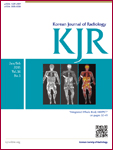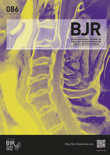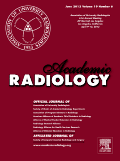
Chinese Journal of Academic Radiology
Scope & Guideline
Advancing Radiological Science through Innovative Research
Introduction
Aims and Scopes
- Diagnostic Imaging Techniques:
The journal covers various diagnostic imaging modalities including CT, MRI, and ultrasound. It emphasizes studies that improve diagnostic accuracy and patient outcomes through advanced imaging techniques. - Artificial Intelligence and Radiomics:
There is a strong focus on the integration of artificial intelligence (AI) and machine learning in radiology, particularly in enhancing image analysis and diagnostic capabilities through radiomics and predictive modeling. - Clinical Applications and Case Studies:
The journal publishes clinical research that explores the application of imaging techniques in diagnosing and managing various diseases, including cancer, cardiovascular diseases, and neurological disorders. - Innovative Research and Methodologies:
Research contributing novel methodologies for imaging, such as deep learning algorithms, quantitative imaging techniques, and novel imaging biomarkers, is a core area of interest. - Public Health and Policy in Radiology:
The journal addresses broader impacts of radiology on public health, including studies on the role of imaging in pandemic responses and healthcare accessibility, particularly in resource-limited settings.
Trending and Emerging
- Integration of Artificial Intelligence:
AI applications in radiology are increasingly prevalent, focusing on automating image analysis, enhancing diagnostic accuracy, and predicting patient outcomes, reflecting the trend towards smart healthcare technologies. - Radiomics and Predictive Modeling:
There is a growing interest in radiomics, which involves extracting large amounts of features from medical images to improve predictive modeling and personalized medicine, particularly in oncology. - COVID-19 Related Imaging Studies:
Research related to COVID-19 and its impact on imaging practices has surged, highlighting the role of radiology in managing pandemic situations and understanding disease progression. - Multimodal Imaging Approaches:
Emerging studies are increasingly adopting multimodal imaging techniques, integrating data from various imaging modalities to provide comprehensive assessments of diseases. - Clinical Applications of Advanced Imaging Techniques:
Recent publications emphasize the clinical application of innovative imaging techniques, such as deep learning-enhanced MRI and CT, to improve diagnostic and therapeutic outcomes.
Declining or Waning
- Traditional Imaging Techniques without Advanced Analysis:
There appears to be a decreasing focus on traditional imaging techniques without the integration of advanced analysis methods such as AI or radiomics, as the field moves towards more sophisticated approaches. - Non-Oncological Imaging Studies:
Research focusing exclusively on non-oncological imaging studies has become less prominent, possibly due to the increased emphasis on cancer-related imaging and diagnostics. - Basic Research without Clinical Application:
There has been a waning of studies that do not directly translate into clinical applications or patient outcomes, as the journal increasingly favors research with immediate relevance to clinical practice. - General Reviews without Novel Insights:
The publication of general reviews that do not provide new insights or advancements in radiology practices has decreased, as there is a growing demand for original research that contributes to knowledge.
Similar Journals

KOREAN JOURNAL OF RADIOLOGY
Empowering the Global Radiology CommunityKorean Journal of Radiology (ISSN: 1229-6929, E-ISSN: 2005-8330), published by the Korean Society of Radiology, stands as a leading international platform for the dissemination of high-quality research and advancements in the fields of radiology, nuclear medicine, and imaging. With a remarkable impact factor and ranked in the Q1 quadrant in its category, this journal showcases cutting-edge studies, clinical investigations, and comprehensive reviews that significantly contribute to the understanding and practice of medical imaging. Researchers, clinicians, and students alike will find the journal an invaluable resource, featuring innovative methodologies, case studies, and essential updates in imaging technology. Since its inception in 2000 and continuing through 2024, the Korean Journal of Radiology remains dedicated to promoting excellence and fostering collaborative research within the global radiology community, underscoring the importance of imaging in modern medicine.

RADIOLOGY
Connecting researchers and practitioners in radiology.RADIOLOGY, published by the Radiological Society of North America (RSNA), stands as a premier journal in the fields of radiology, nuclear medicine, and imaging. Established in 1945, this esteemed journal has consistently provided groundbreaking research and insights, helping to shape advancements in diagnostic imaging and therapeutic interventions. With a commendable Q1 ranking in its category and a remarkable 99th percentile ranking in Scopus, RADIOLOGY continues to be a pivotal resource for clinicians, researchers, and students alike. Although not an Open Access journal, it offers a wealth of high-quality peer-reviewed articles that contribute significantly to the ongoing discourse in the medical community. With a strong focus on innovative techniques and the integration of new technologies, RADIOLOGY remains essential for professionals aiming to stay at the forefront of medical imaging practices.

BRITISH JOURNAL OF RADIOLOGY
Elevating Standards in Radiology for Over 75 YearsBritish Journal of Radiology is a leading peer-reviewed journal published by the British Institute of Radiology, dedicated to advancing the field of radiology, nuclear medicine, and imaging. With a prestigious history dating back to 1945, this journal is at the forefront of disseminating cutting-edge research and innovations that significantly impact clinical practice. Currently enjoying a Q1 ranking in the field of radiology and Q2 in general medicine for 2023, it is recognized for its rigorous standards and high-quality content, ranking #87 out of 333 in Scopus for specialties related to Medicine, Radiology, Nuclear Medicine, and Imaging, placing it in the 74th percentile. Researchers, professionals, and students are encouraged to engage with the latest findings and comprehensive reviews presented within its pages, which contribute not only to academic discourse but also to the evolution of practice in the wider medical community.

Current Radiology Reports
Unlocking the future of imaging and nuclear medicine.Current Radiology Reports is an esteemed journal published by SPRINGERNATURE, focusing on the dynamic field of radiology, nuclear medicine, and imaging. With a commitment to advancing knowledge and promoting innovative practices, this journal serves as a valuable resource for researchers, healthcare professionals, and students striving to stay at the forefront of radiological advancements. Featuring an impressive impact factor and recognized as a Q3 journal within its category as of 2023, it highlights critical developments and comprehensive reviews that inform clinical practice and research methodologies. Although it operates under a subscription model, the journal provides a rich repository of peer-reviewed content, covering a wide range of topics from diagnostic imaging to therapeutic applications. With a publication span from 2013 to 2024, Current Radiology Reports continues to uphold its reputation as a leading publication critical for anyone involved in the radiology profession.

Tomography
Bridging the gap between research and clinical application.Tomography is an esteemed peer-reviewed journal published by MDPI, focusing on a broad spectrum of topics related to medical imaging and diagnostics. Launched in 2015, this Open Access journal serves as a vital platform for researchers, professionals, and students in the fields of medicine, radiology, nuclear medicine, and imaging. With an impressive impact factor reflecting its relevance, the journal has achieved a quartile ranking of Q2 in both Medicine (Miscellaneous) and Radiology, Nuclear Medicine, and Imaging as of 2023. Renowned for disseminating high-quality research, Tomography welcomes original research articles, reviews, and technical notes, fostering innovation and collaboration within the scientific community. Housed in Basel, Switzerland, the journal aims to bridge the gap between fundamental research and clinical application, appealing to a diverse readership eager to advance the field of medical imaging.

ACADEMIC RADIOLOGY
Transforming Insights into Radiological PracticeACADEMIC RADIOLOGY, published by Elsevier Science Inc, is a premier journal in the field of radiology, nuclear medicine, and imaging. With an ISSN of 1076-6332 and an E-ISSN of 1878-4046, this journal has established itself as a vital resource since its inception in 1994, featuring high-quality research that continuously shapes the landscape of medical imaging. Ranking in the top quartile (Q1) for its category in 2023, ACADEMIC RADIOLOGY boasts an impressive Scopus ranking of #38 out of 333, positioning it in the 88th percentile among peers. This journal is dedicated to advancing knowledge through original research articles, review papers, and case reports that highlight innovative techniques and technologies in radiology. Although it does not offer open access, it remains a go-to publication for professionals and students seeking to stay abreast of the latest developments and best practices in the field, ensuring that its contributors and readers are at the forefront of radiological science.

Abdominal Radiology
Advancing the Frontiers of Abdominal ImagingAbdominal Radiology is an esteemed journal published by Springer, focusing on the intricate and evolving field of abdominal imaging. With its ISSN 2366-004X and E-ISSN 2366-0058, this journal serves as a vital platform for disseminating high-quality research and clinical findings that advance both the understanding and practice of radiology specifically related to abdominal diseases. With a commendable impact, categorized in 2023 as Q2 in the fields of Gastroenterology, Radiological and Ultrasound Technology, and Radiology, Nuclear Medicine and Imaging, and Q1 in Urology, it attracts an audience eager for cutting-edge insights. Furthermore, its ranking in Scopus reflects its strong influence, with a notable position of #21 in Urology and #92 in Radiology. The journal adopts an Open Access model, facilitating a wider dissemination of knowledge and promoting collaborative research efforts on a global scale. The convergence of contributions from established researchers and emerging professionals alike enriches its content from 2016 to 2024, ensuring that readers remain at the forefront of abdominal diagnostics and therapeutic advancements.

European Radiology Experimental
Fostering Global Collaboration in Radiology InnovationEuropean Radiology Experimental is a premier open-access journal published by Springer Wien, dedicated to advancing the field of radiology through innovative research and experimentation. Since its establishment in 2017, the journal has quickly gained recognition, evidenced by its impressive Q1 ranking in the Radiology, Nuclear Medicine and Imaging category, and its placement within the top 83rd percentile of the Scopus rankings. Based in the United Kingdom, this journal aims to bridge the gap between clinical practice and cutting-edge research, providing a platform for rigorous peer-reviewed articles that explore new methodologies, technologies, and insights in radiological sciences. With a commitment to open access, European Radiology Experimental ensures that its content is readily accessible to a global audience, supporting the dissemination of knowledge and fostering collaborations among researchers, professionals, and students in the medical imaging community. As it progresses through its convergence years, the journal continues to play a vital role in shaping the future of radiological research and practice.

AMERICAN JOURNAL OF ROENTGENOLOGY
Pioneering Insights in Radiology.AMERICAN JOURNAL OF ROENTGENOLOGY (AJR), published by the American Roentgen Ray Society, stands as a beacon of excellence in the fields of Radiology, Nuclear Medicine, and Imaging. With an impressive impact factor positioning it in the Q1 category of both Medicine (Miscellaneous) and Radiology as of 2023, AJR is ranked 13th out of 333 journals in its category, reflecting its prominent presence and high relevance in advancing medical imaging knowledge and practice. Established in 1973 and continuing through to 2024, the journal encompasses a broad spectrum of research, critical reviews, and innovative techniques, making it a vital resource for researchers, healthcare professionals, and students alike. Although it does not currently offer open access options, AJR ensures that its rigorous, peer-reviewed content remains accessible to a global audience committed to the evolution of radiological science. With its home base in Leesburg, Virginia, AJR not only informs but also inspires advancements in radiology, enhancing diagnostic practices and patient care globally.

JOURNAL OF MAGNETIC RESONANCE IMAGING
Elevating Imaging Standards through Cutting-Edge Research.JOURNAL OF MAGNETIC RESONANCE IMAGING (ISSN: 1053-1807; E-ISSN: 1522-2586), published by WILEY, stands as a leading academic platform in the field of Radiology, Nuclear Medicine, and Imaging. With an impressive impact factor that reflects its Q1 ranking in the respective category and a notable Scopus rank of 30 out of 333 journals, this journal serves as a critical resource for cutting-edge research and innovative practices in magnetic resonance imaging. Since its inception in 1991, it has provided a repository of high-quality research, reviews, and clinical applications aimed at enhancing the understanding and technological advancements within the imaging community. Although it does not offer Open Access, the journal's comprehensive approach ensures that professionals, researchers, and students alike can gain crucial insights and contribute significantly to the evolving landscape of medical imaging. With a commitment to excellence and relevance, the journal continues to push the boundaries of knowledge and practice in its field.